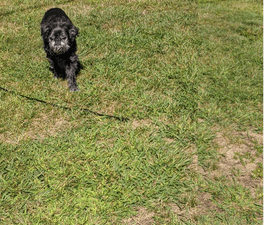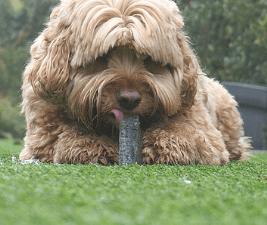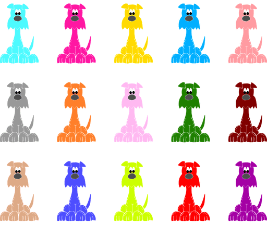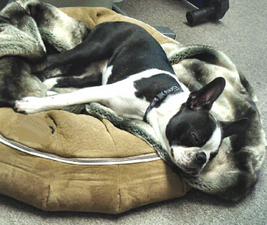We all want our dogs to live long, healthy lives. An initial finding from the Dog Aging Project suggests that exercise keeps dogs young – in both body and mind. Active dogs are less likely to succumb to Canine Cognitive Dysfunction, a canine version of Alzheimer’s Disease.
Symptoms of Canine Cognitive Dysfunction in older dogs may include pacing, getting “lost” in familiar places, walking into walls or doors, or having trouble finding dropped treats. These symptoms are also common in older dogs with vision or hearing problems. So far, the project doesn’t yet know whether one causes the other, but they are related.
Exercise is key
What they did find is a convincing correlation between activity and CCD. Dogs who their owners described as “active” were almost six and a half times less likely to have Canine Cognitive Dysfunction. The odds of CCD increase with each year of aging, so keeping your dog moving in their “senior” years may be even more important than with younger dogs.
With a teen-aged dog ourselves, we know it can be challenging to get your older dog up and moving. Tango, Fran’s 13-year-old Brussels Griffon can’t do a flight of stairs anymore, but he can still jump up on the couch. Some days it’s hard to wake him from his naps. And when he does get up, we can see him working out the kinks as he moves.
When you have a little old dog, it’s tempting to just pick him up and do the walking for him. Take him where you want him to go, and get there so much faster. But resisting the temptation is important. The more we make our old dogs move, the longer they’ll be able to move.
We still make the old guy do his exercises every day. He’s not crazy about his Perch Work, but the treats he gets make it worth his while.
Small dog age slower
We love all dogs, but only small dogs have shared our lives. Partly that’s because we have a small home. But it’s also because the smaller the dog, the longer the lifespan. The thought of losing a dog in just six or seven years is heartbreaking, but that’s the average for some of the giant breeds.
Logically, chances of dogs developing dementia go up with each successive year of age. As the study progresses, we’ll be interested in seeing if there’s any difference in the occurrence of CCD between large and small dogs.
We’ve been following the progress of the Dog Aging Project for a while now. The study’s goal, with participation from the public, is hoping to shed light on the causes of aging in both dogs and people. The project is still looking for participants, if you’re interested. They say: “We welcome all dogs—young and old, mixed breed and purebred, healthy and those with chronic illness.” The plan is to collect information about the dogs over the course of ten or more years.
Enjoyed this post? Click here to sign up for the weekly newsletter and never miss another!












